Subscriber Benefit
As a subscriber you can listen to articles at work, in the car, or while you work out. Subscribe Now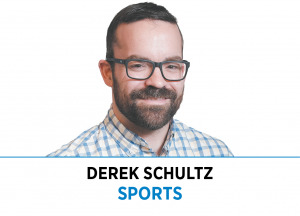 When naming the professional sports greats of Indianapolis, even an outsider would be able to come up with Peyton Manning and Reggie Miller. Besides having statues and murals dedicated to them, both figures continue to enjoy national relevance, with Manning remaining one of the most prominent figures in sports and Miller serving as a top analyst for NBA broadcasts.
When naming the professional sports greats of Indianapolis, even an outsider would be able to come up with Peyton Manning and Reggie Miller. Besides having statues and murals dedicated to them, both figures continue to enjoy national relevance, with Manning remaining one of the most prominent figures in sports and Miller serving as a top analyst for NBA broadcasts.
Razor Shines doesn’t have a national profile. The former Indianapolis Indians great has no statute or mural, nor have there been any Hall of Fame jackets or “30 for 30” documentaries to commemorate this particular local sports icon. However, three decades removed from being an indelible part of summer nights on West 16th Street, Shines will receive an honor reserved for only the most memorable and beloved sports figures in this city: a jersey retirement ceremony.
“When I got the [jersey retirement] call, I really didn’t know what to say,” said Shines, now 68 years old and living in Texas. “I had to take it in, but it’s an honor that I still can’t believe yet.”
The Tribe’s nod to Shines in retiring his No. 3 jersey at Victory Field is unprecedented for the organization. Yes, Jackie Robinson’s groundbreaking No. 42 is recognized as a retired number throughout professional baseball, but immortalizing the No. 3 serves as the first, and perhaps last time, the Indians have bestowed such an honor on one of their own.
The Colts have retired several numbers, including Manning’s No. 18, which is a practice that dates back to their Baltimore days. The Pacers have an even higher standard, with just four names alongside Miller’s hanging in their rafters, all of whom are enshrined in the Basketball Hall of Fame.
Even though he never came close to Cooperstown, perhaps it is fitting that Razor Shines stands alone as the only player in 122 seasons of Indianapolis Indians baseball to receive the distinction.
The first-time accolade will be celebrated during a pregame ceremony on Saturday night, but that’s hardly the only unique element in Razor Shines’ legacy.
The player
In looking strictly at Shines’ major league career, there is nothing to suggest he would’ve been a beloved or even memorable player along the way. Across four different MLB seasons, he appeared in just 68 games and amassed 15 hits for the Montreal Expos, who did produce Hall of Fame talents that came through Indianapolis, like Larry Walker and Randy Johnson. Major league fortune, whether it be poor timing, positional roadblocks or a devastating knee injury during one of those rare call-ups, might not have been in the cards for Shines, but it allowed the Indians’ mainstay to spend parts of nine different seasons in the Circle City. In that unparalleled span, Shines racked up nearly 800 career games as an Indian from 1984 to 1993.
“We have a rich legacy of players, and people ask me about [Roger] Maris or [Harmon] Killebrew or Randy Johnson, but there’s nobody that compares to Razor on a couple of levels,” said Bruce Schumacher, chair and CEO of the Indianapolis Indians. “You’ll never see that longevity [in one place] again—it’s rare that we even have a guy for more than one year—his colorful personality, and the fact we won four championships and he was on all of those teams. Razor’s career was unique.”
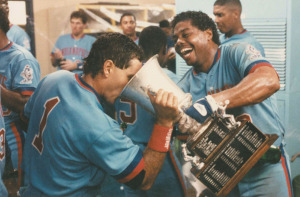
Shines was the face of the franchise’s most successful decade in its long history, serving as a key part of an American Association four-peat beginning in 1986, which was capped by back-to-back Triple-A Classic championships in 1988 and 1989. He ranks among the all-time franchise leaders in several major offensive categories, including home runs (third), RBIs (fourth), and doubles (fifth). In the grand scheme of things, there are dozens of pro athletes in this town who had more statistical success and collected more accolades than Shines, but almost none of them captured the hearts of the fans in this city like he did.
“I started loving Indianapolis right away,” Shines said. “Winning helped, but the fans took a liking to me and my family, and it was a match. I’m not saying I wouldn’t have liked staying [in Montreal] and making X amount of dollars more,” Shines continued, “but Indianapolis made me happy. This place was good to me.”
Shines’ presence was constant, from appearing in a Pepsi commercial to being the smiling face on Indians ticket advertisements in the newspapers. He lived here year-round, working a plethora of jobs in the offseason, most notably as a delivery man on a huge oil truck. Whether it be pickup games at the Jewish Community Center, random appearances at local Little League games and practices, or any public events surrounding the Indians, Razor was always available to the fans.
The name
Had he stuck with his birth name of Anthony and not shifted to his middle name of Razor, a name that has continued to be carried on in his family for several generations, perhaps Shines would have been less of an Indy pop culture phenomenon. His memorable walk-up introduction at Bush Stadium only added to the mystique Razor carried.
That’s because for over 70 games per season, the home crowd was electrified by the loud “RRRRRAZOR… Shines” whenever No. 3 stepped to the plate.
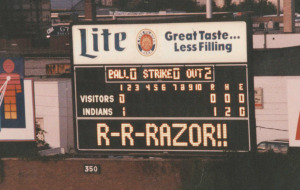
“The introduction merely accompanied his attitude and approach to the game,” said Kurt Hunt, the public address announcer who coined Shines’ trademark intro. “Fans remember the call and how they’d echo it in the stands, but Razor had a style and a strut about him. Whether he was up or down 10 runs, he was a fierce competitor.”
“It’s a big part of his lore,” said Jake Query, longtime sports radio host and lifelong Indianapolis resident. “For basically a decade, any game that you went to at Bush Stadium, you knew you were going to hear ‘Take Me Out to The Ballgame,’ and you knew you were going to hear ‘RRRRRRRRazor.’”
The name Razor emblazoned Shines’ presence in the minds of fans in a way the name Anthony would have never been able to do.
The era
It also helped that Razor and the Tribe won. During Shines’ playing career, the Indians were the lone winner among the pro sports franchises in Indianapolis—the Colts had yet to win a playoff game in their new city, and the Pacers were a perennial doormat—and for a time, Shines was perhaps Indy’s most prominent athlete. Manning was still a decade from becoming a Colt, and although Miller was drafted by the Pacers while Shines was still in town, the “Boom, Baby!” runs didn’t materialize until the mid-1990s. For a fledgling city still finding itself, one with barely a discernable skyline to speak of, much less a national reputation for being a big-time sports destination, that was a big deal.
“We had never really had a major sports star in this town,” Query said. “And while I’m sure he thought of himself as a big-league player, Razor never sulked about being here—he made the best of it. As a city, we were also a rung below where we wanted to be, but we made the best of it, too. He was the perfect representation of what Indianapolis was at that time.”
“I wanted to be the person that when people spoke about the Indianapolis Indians, they thought about me,” Shines said. “Just like when I played, I wanted to be that guy that came through for them at all times.”
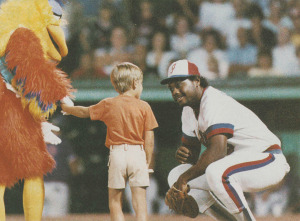
He may have come through for a minor league team, but Razor Shines forever holds a major league standing in Indianapolis sports lore. In a city where being “one of us” is very important to the natives, Razor ingrained himself as a Hoosier. Even all these years later, whenever he comes back, he still feels the love from the city … and gives it right back.
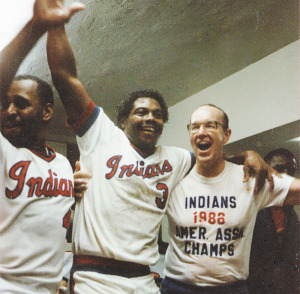 “There is no doubt in my mind that if you would’ve handed me this script, this [career] would’ve been the thing I wanted,” Shines said. “The major leagues was where you strive to be when you signed that first contract—it’s the best of the best—but if I could’ve seen the way things were going to play out for me, I still would’ve told them, ‘Just leave me in Indianapolis.’”
“There is no doubt in my mind that if you would’ve handed me this script, this [career] would’ve been the thing I wanted,” Shines said. “The major leagues was where you strive to be when you signed that first contract—it’s the best of the best—but if I could’ve seen the way things were going to play out for me, I still would’ve told them, ‘Just leave me in Indianapolis.’”
Schumacher said the organization is projecting a near sellout on Saturday night to pay homage to Shines. Undoubtedly, a chunk of the 14,000 or so fans at Victory Field will be transported back to the halcyon days of Razor, Tribe baseball and those special summer nights at Bush Stadium in the 1980s, conjuring up cherished memories for anyone fortunate enough to have experienced it.
In that ceremony, at a different stadium and, in essence, a completely different Indianapolis, they will gather to recognize the Indians’ one-of-a-kind No. 3, immortalizing a player, legacy and era in this city that can never again be replicated.•
__________
From Peyton Manning’s peak with the Colts to the Pacers’ most recent roster makeover, Schultz has talked about it all as a sports personality in Indianapolis for more than 15 years. Besides his written work with IBJ, he’s active in podcasting and show hosting. You can follow him on X, formerly Twitter, @Schultz975.
Please enable JavaScript to view this content.
